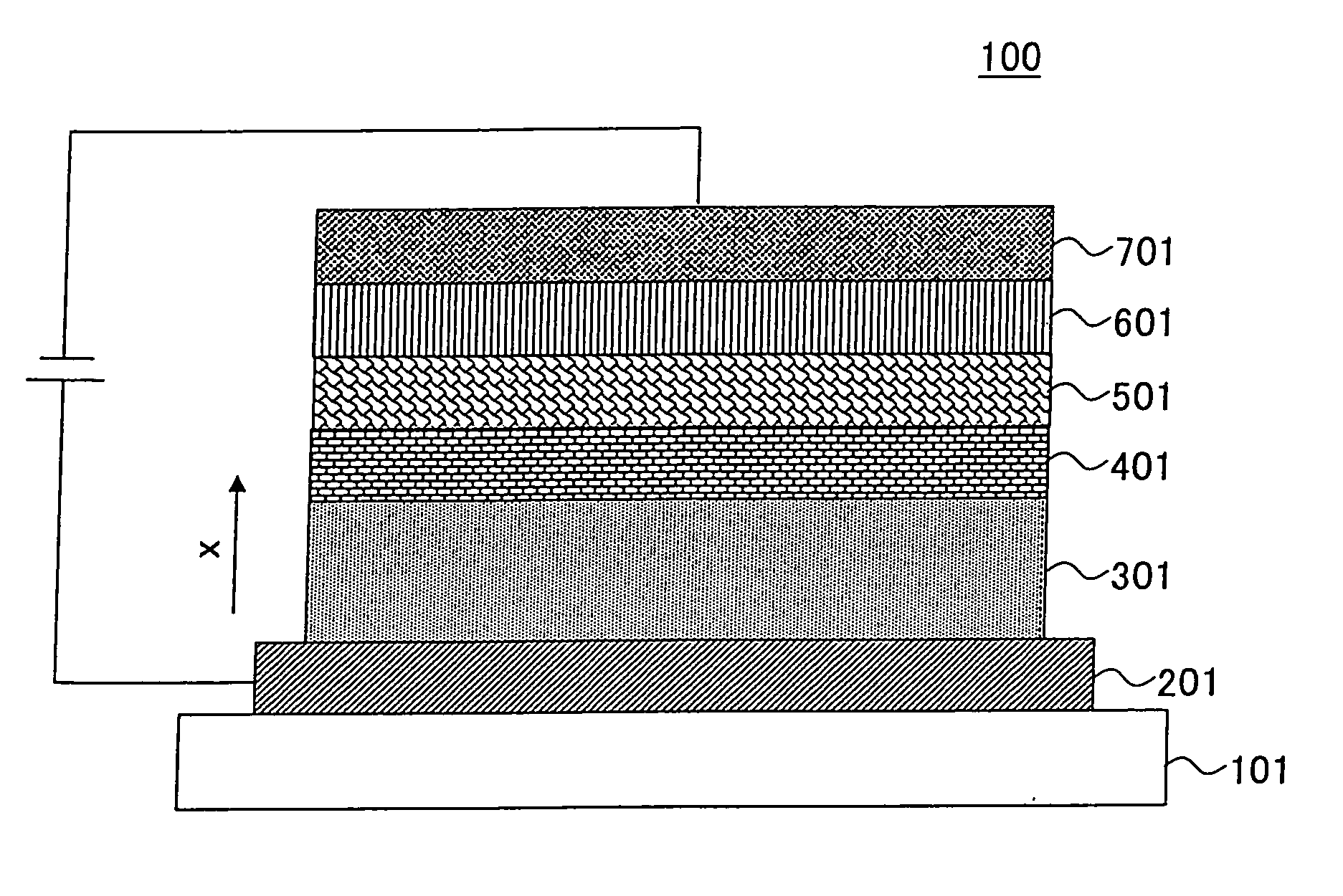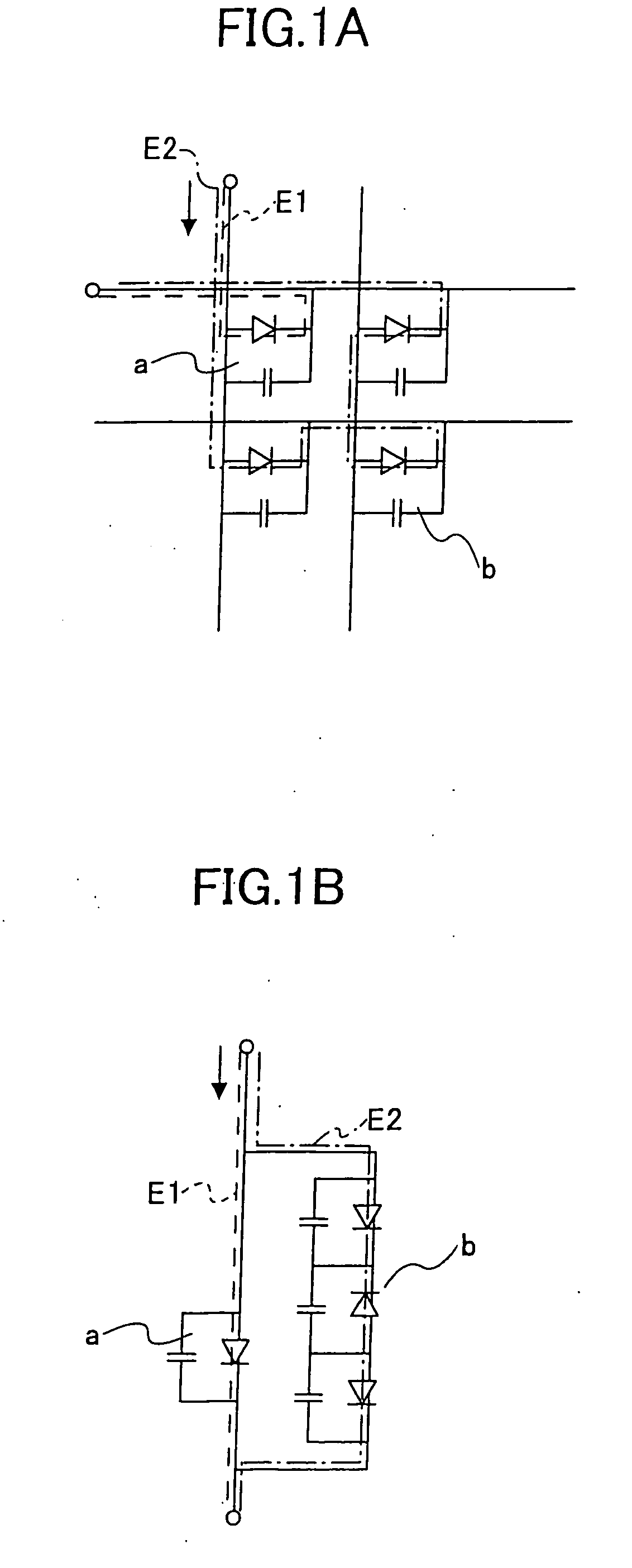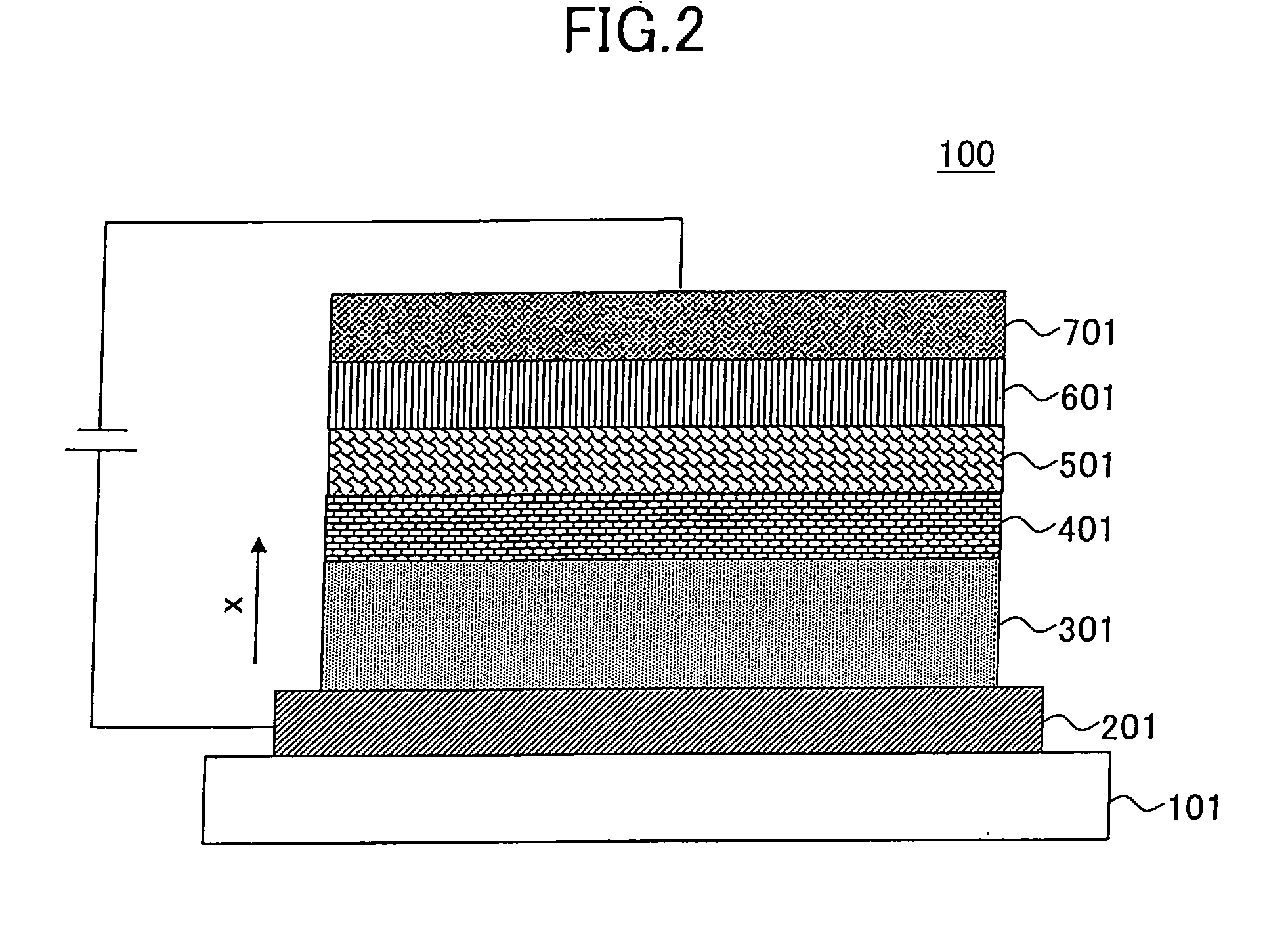Organic El Element, Organic El Display Apparatus, Method for Manufacturing organic El Element, and Apparatus for Manufacturing Organic El Element
a technology of organic el and display apparatus, which is applied in the direction of discharge tube luminescnet screen, non-electron-emitting shielding screen, natural mineral layered product, etc., can solve the problems of organic el layer short circuit, drive voltage increase, and ultimately short circuit and destruction of organic el layer, so as to improve the reproducibility of the thickness of the obtained film and improve the concentration of components.
- Summary
- Abstract
- Description
- Claims
- Application Information
AI Technical Summary
Benefits of technology
Problems solved by technology
Method used
Image
Examples
example 1
[0063]FIG. 4A shows an example in which the hole injection layer 301A shown in FIG. 3A is used as the hole injection layer in the organic EL element shown in FIG. 2. The accompanying graph schematically shows the concentration of the acceptor in the hole injection layer. In the drawing, the parts described above are represented by the same reference characters and the descriptions thereof are omitted. In the drawing, components other than the hole injection layer, the positive electrode and the hole transport layer are omitted, and the x-axis direction shown in this figure corresponds to the x-axis direction shown in FIG. 2 (the same holds true for FIGS. 4B to 4C).
[0064]In the example, a substrate formed from glass was used as the substrate 101, an ITO electrode was used as the positive electrode 201, 2-TNATA (4,4′,4″-tris(2-naphthylphenyl amino)triphenylamine, manufactured by BANDO CHEMICAL INDUSTRIES, LTD) was used as the hole injection layer 301A, F4-TCNQ (2,3,5,6-tetrafluoro-7,7...
example 2
[0075]FIG. 4B shows the example in which the hole injection layer 301B shown in FIG. 3B is used as the hole injection layer in the organic EL element shown in FIG. 2. The accompanying graph schematically shows the concentration of the acceptor in the hole injection layer.
[0076]In this example, the structures of the substrate 101, the positive electrode 201, the hole transport layer (electron suppression layer) 401, the luminescent layer 501, the electron transport layer 601 and the negative electrode 701 are the same as in Example 1, and can be produced by the method described in Example 1.
[0077]In this example, similarly to Example 1, 2-TNATA was used as the hole injection layer 301B, and F4-TCNQ was used as the acceptor doped in the hole injection layer when the hole injection layer 301B is formed on the ITO surface as follows.
[0078]First, 2-TNANA and F4-TCNQ were deposited to a thickness of 30 nm (0.12%) at the deposition speed of 0.1 nm / s and 0.00012 nm / s, respectively, so that ...
example 3
[0082]FIG. 4C shows an example in which the hole injection layer 301C shown in FIG. 3C is used as the hole injection layer in the organic EL element shown in FIG. 2. The accompanying graph schematically shows the acceptor concentration of the hole injection layer.
[0083]In this example, the structures of the substrate 101, the positive electrode 201, the hole transport layer (electron suppression layer) 401, the luminescent layer 501, the electron transport layer 601 made of Alq, and the negative electrode 701 are the same as in Example 1, and can be formed by the method described in Example 1.
[0084]In this example, similarly to Example 1, 2-TNATA was used as the hole injection layer 301C, and F4-TCNQ was used as the acceptor doped in the hole injection layer when the hole injection layer 301C was formed on the surface of the ITO as follows.
[0085]First, 2-TNANA and F4-TCNQ were deposited to a thickness of 10 nm (0.04%) at the deposition speeds of 0.1 nm / s and 0.00004 nm / s, respective...
PUM
| Property | Measurement | Unit |
|---|---|---|
| thickness | aaaaa | aaaaa |
| pressure | aaaaa | aaaaa |
| thickness | aaaaa | aaaaa |
Abstract
Description
Claims
Application Information
 Login to View More
Login to View More - R&D
- Intellectual Property
- Life Sciences
- Materials
- Tech Scout
- Unparalleled Data Quality
- Higher Quality Content
- 60% Fewer Hallucinations
Browse by: Latest US Patents, China's latest patents, Technical Efficacy Thesaurus, Application Domain, Technology Topic, Popular Technical Reports.
© 2025 PatSnap. All rights reserved.Legal|Privacy policy|Modern Slavery Act Transparency Statement|Sitemap|About US| Contact US: help@patsnap.com



